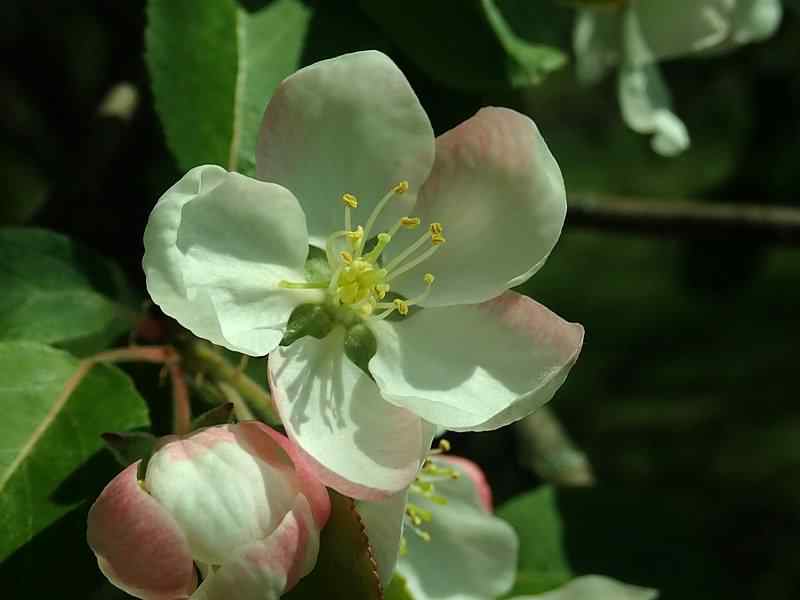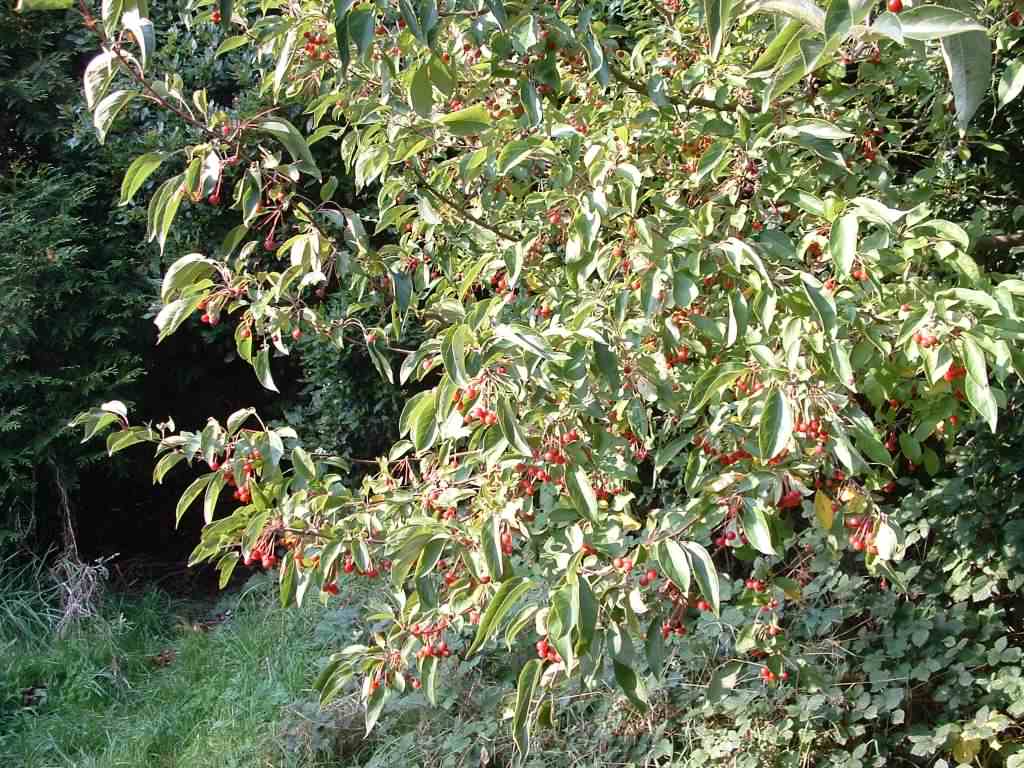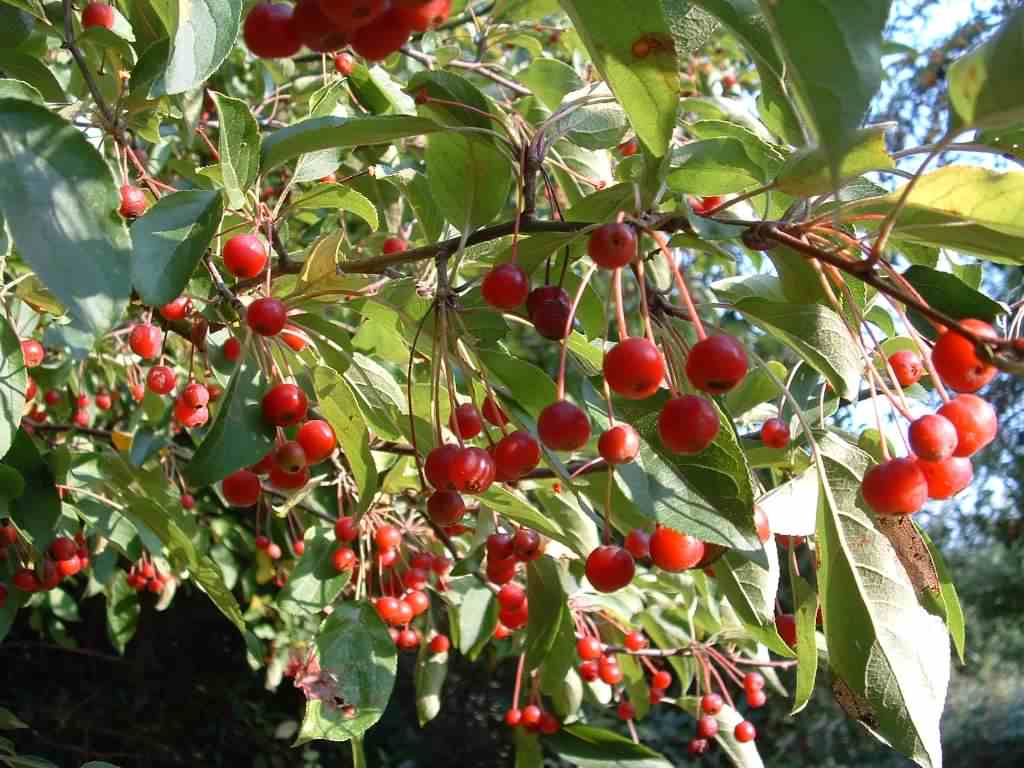
Photo ©2019 Salicyn
Click for a larger image
More photos
Photo ©2019 Salicyn
Click for a larger image
Siberian Crab Apple - Malus Baccata var. Mandshurica
Family - Rosaceae
Also known as - Chinese crab apple
The Siberian Crab Apple is a forest species originating from northern Asia I.E. China, eastern Russia, North Korea, and Japan, planted outside of its native area, it is an introduced species used as a garden ornamental, in landscaping, as a commercial rootstock and also for Bonsai. Growing to 10–14m (33–47ft) high with overhanging red–brown branches and red–brown buds, elliptic or egg–shaped leaves toothed edges dark green above and pale underneath are 3–8cm long by 2–3.5cm (1.2–3.2in) wide on thin red stalks 1.5–4cm (0.5–1.6in) long.
Flowers are formed from alternate pink buds in early spring producing lots of fragrant white flowers with a pale pink blush, 3–3.5cm (1.2–1.4in) in diameter in groups of 4–6. The flowers once fertilised mature to a dense cluster of red cherry like edible fruit in September and October, about 1cm (0.4in) diameter also on long red stems. They have a good wildlife potential providing fruit browsed by many birds and mammals, however rodents and rabbits can destroy young trees by girdling them. Diseases affecting Siberian Crab Apple include fireblight, apple rust, scab and canker.
BCP do not advise or recommend that Siberian Crab Apple – Malus Baccata var. Mandshurica is eaten or used as an herbal remedy. It has been used in the past for the treatment of dysentery and diarrhea and is a source of the phenol phloretin, an antioxidant and antibiotic. Fruit is sour but has been used for apple jelly.
The seeds of all Apples are toxic. The seeds contain the chemical Amygdalin which is a cyanide based compound which decomposes to produce the poison Hydrogen Cyanide.
 Photos ©2006 |
 Click any photo for a larger image |
 Close window |
Site design ©1999– Brickfields Country Park - Privacy -